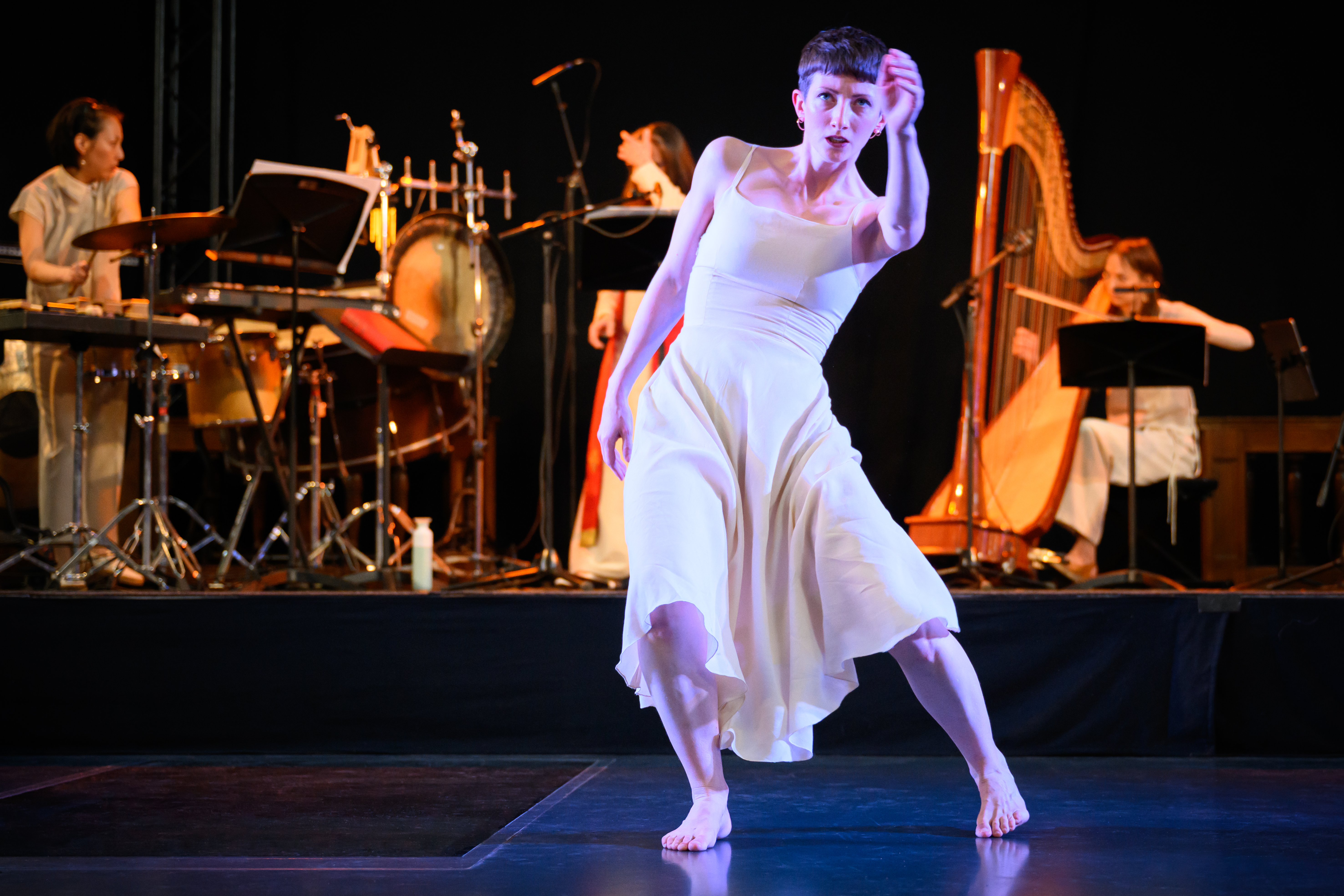
Cover Her is a powerful new work by Litha Efthymiou. Combining music, dance, and theatre, the piece explores the lasting pressures placed on women, weaving together stories from different times and experiences.
Ahead of the performance, we spoke with Litha about the inspiration behind Cover Her, the creative journey, and how the themes of resistance resonate both historically and today.
Where did your initial inspiration come from, and how did the uncovering of the stories you highlight shape the development of the work?
Since 2019, I have been working with a team of academics at Radboud University in Nijmegen (in the Netherlands), researching medieval Christian martyr saints from the Old Hispanic Liturgy – the local Christian liturgy practiced on the Iberian Peninsula until around the 1080s. Through this work, I encountered the stories of several female martyr saints. Eulalia’s story stood out to me the most: at just 13 years old, she chose to be brutally tortured in the Roman arena over abandoning her faith, sacrificing herself to preserve the purity of her young body. I was particularly drawn to Eulalia’s story and wanted to use it as the historical foundation for a modern narrative that explores how women today are pressured to conform to idealised standards of femininity.
Essentially the work tells the story of two women: Eulalia, whose story is told through the libretto and dance; and a woman from the present day who we meet in court. As she addresses the jury directly, she publicly shares her experience of abuse as a young gymnast and the ongoing effects of this into her adulthood.
We wanted to juxtapose these stories to highlight the enduring expectations placed on women, both then and now, to conform to idealised standards of femininity.
How do you expect Cover Her to resonate with contemporary audiences?
Through these two stories, Cover Her invites us to reflect on our modern lives and consider the price of our ongoing expectations of femininity.

How did you find working with musicians, a dancer and an actor to bring Cover Her to life – did their interpretations influence the shape of the final piece?
The experience of working with musicians, an actor and dancer to bring the piece to life has been wonderful. We started to devise ideas in 2023 in the Netherlands. At this point, I had already created 20 minutes of music, and as the process of devising developed, all artists inputted into the direction the piece would go – offering up suggestions, trying out stagings. It was collaborative experience.
What kind of experience awaits the audience?
The piece is multidisciplinary, featuring a newly composed score for soprano, harp, percussion, and cello, contemporary dance and a newly written script delivered by an actor. Audiences can expect a poetic reimagining of a medieval ritual, carefully crafted for a modern secular context.
Cover Her comes to Spitalfields Music Festival 2025 on Monday 7th July at Rich Mix
